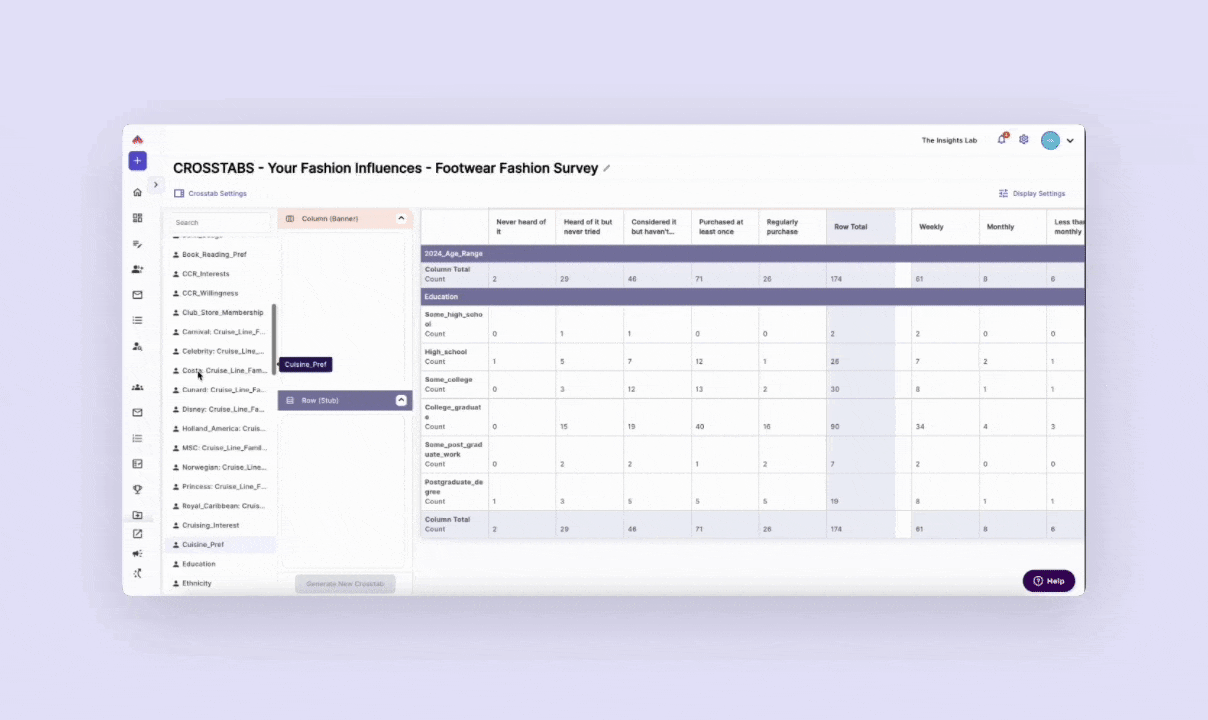Autonomous insights
Autonomous Insights, Unmatched Precision
Traditional research is slow, manual, and fragmented. Not anymore.

Fuel Cycle’s Autonomous Insights Platform shatters old constraints—delivering instant, AI-powered research execution at scale. No more silos. No more bottlenecks. Just seamless, always-on intelligence that keeps pace with your business.
Research Reimagined
Today’s researchers don’t just analyze data—they drive strategy.
Autonomous Insights gives them the tools to lead, not just support.
With AI handling the heavy lifting, your research team can focus on high-value analysis, storytelling, and guiding business decisions with confidence.
Specialized Agents for Instant Execution
From survey creation to competitive intelligence, these AI-agents take research execution off your plate.

Survey Designer
Design engaging surveys with ease using our AI-powered survey designer. Define your research objectives, and watch AI craft a tailored survey to gather meaningful insights.
Crosstab Analyzer
Create a compelling crosstab report by simply uploading a set of crosstabs. Define your objective, and watch AI create actionable insights!


Web Researcher
Discover new research opportunities with our AI-powered search engine. Define your objectives, and AI will analyze the web and create a comprehensive report.
How it Works - Smarter, Faster, Autonomous.
Business questions inspire research opportunities.
- Takes business inputs as objectives
- Continuously tracks market signals
- Detects emerging research needs
AI instantly designs the best approach and plan.
- Selects optimal research approach
- Combines qual & qual methods
- Ensures expert-level rigor
Agents execute with rigor market-moving insights.
- Runs end-to-end research process
- Ensures quality and compliance
- Delivers insights in real-time
Automated Orchestration
From Questions to Answers in Real-Time
No delays. No friction. AI-powered orchestration ensures research moves at the speed of business.
- End-to-End Execution – AI autonomously runs research across internal data, audiences, and external sources.
- Automated Workflows – Intelligent AI-driven processes that align research execution with strategic priorities.


Embedded AI in Research Workflow
Ditch the manual grind. Our embedded AI tools eliminate inefficiencies so you can focus on decision-making.
- AI Executive Summary – Instant, shareable insights extracted from complex research.
- AI Tags – Auto-categorization of qualitative data, surfacing key themes in seconds.
- AI Clips – AI-generated video snippets that amplify consumer voices.
Why Autonomous Insights Wins.
Traditional Research
Autonomous Insights
Speed
Weeks to months for results
Instant insights & continuous monitoring
Scale
Limited by team bandwidth
AI-driven, unlimited research potential
Quality
Varies by researcher expertise
Standardized, AI-powered excellence
Cost
High costs & agency fees
Scalable pricing aligned with usage
Why Fuel Cycle? Because Slow, Siloed Research is Dead.
Enterprise-Grade AI, Built for Action.
Scalable & Secure
Enterprise-ready platform with ironclad security.
Deep Audience Intelligence
Proprietary data fueling AI-driven insights.
AI-Driven Research Excellence
Continuous platform learning and evolution.
Strategic Partnership
White-glove support & tailored enterprise solutions.
FAQs
Everything You Need to Know
How does AI maintain research quality?
Our AI platform continuously learns, applying standardized methodologies and quality controls to ensure research integrity.
What research types can be automated?
From concept testing to customer sentiment analysis, AI automates both qualitative and quantitative research at scale.
How does Autonomous Insights integrate with existing tools?
Seamlessly connects with CRM systems, internal databases, and other research tools for end-to-end efficiency.
Is data privacy ensured?
Yes—SOC 2, HITRUST, and HIPAA certifications guarantee enterprise-grade security and compliance.
Ready to Experience the Future of Research?
Schedule a demo today.